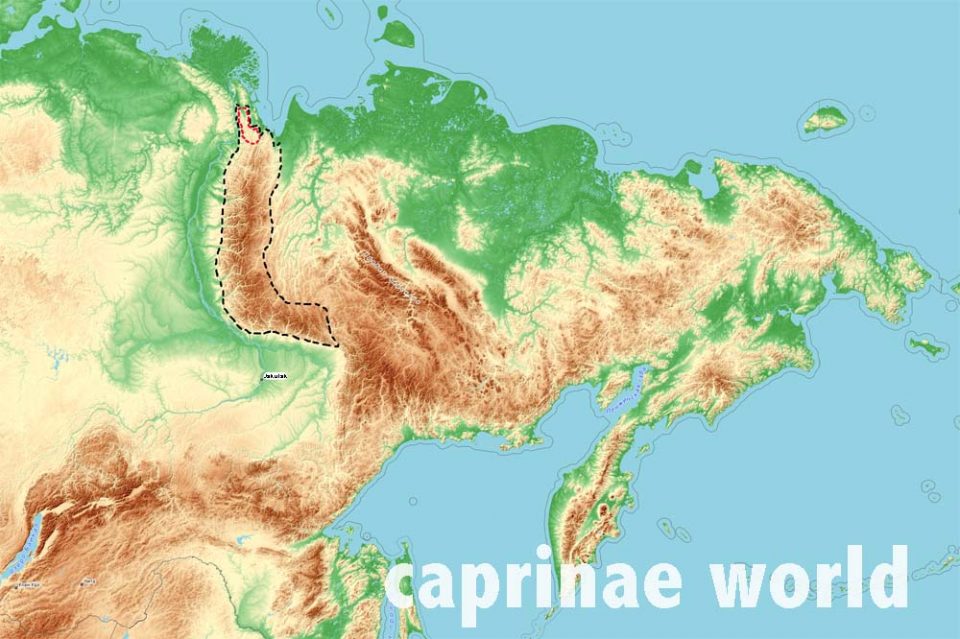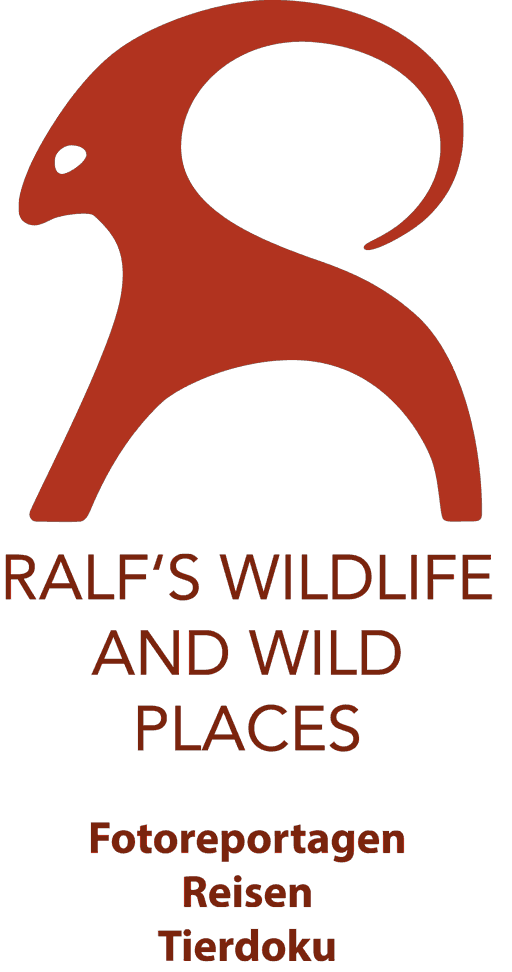The Kharaulakh Snow Sheep is a subspecies – not yet described -, most closely related to the Yakut Snow Sheep.
Name
English: Kharaulakh Snow Sheep [1]
German: Kharaulakh-Schneeschaf
Taxonomy / genetics / similar subspecies
Dotsev, A. et al (2018) applied a gene analyses (using the Ovine SNP50 BeadChip developed for domestic sheep) to examine population structure and evaluate genetic diversity of Snow Sheep (Ovis nivicola) inhabiting the Verkhoyansk Mountains and Momsky Ridge. A „neighbor-Net analysis based on pairwise FST distances“ depicted a network representing the phylogenetic relationships between the studied populations. It was shown that while four subpopulations further south are all related to each other in the tree, Kharaulakh Snow Sheep was an isolated group, related only to the closest subpopulation further south. [1]
In terms of genetic diversity Dotsev, A. et al (2018) found that the heterozygosity levels (high heterozygosity mean lots of genetic variability) were lowest in Kharaulakh Snow Sheep, the northernmost population. Accordingly the lowest allelic richness (number of variants form of a given gene) was also found in Kharaulakh Snow Sheep. Both values – heterozygosity and allelic richness – increased southwards. The inbreeding coefficient was not signifcant. [1]
As Kharaulakh Snow Sheep occurs at the edge of the species distribution – the northernmost tip of the Verkhoyansk mountain chain – gene transfer with other populations is limited. [1]
Using the „f3 statistics and TreeMix analysis“ it was discovered that Kharaulakh Snow Sheep has a different origin than the neighbouring populations to the south. Most likely, Kharaulakh Snow Sheep was isolated from the other groups of Snow Sheep during iceage (Late Pleistocene). Apparently, the low-altitude Kharaulakh Mountains played a role as a glacial refugium. Kharaulakh Snow Sheep was separated from the next population to the south for „several thousand years“. [1]
Distribution
by country/state: Russia / Yakutia
close to the Arctic Ocean, southeast of the delta of the Lena River; north of the arctic circle, at around 71° North; closest settlement is Tiksi
Sheep inhabiting territories in the Verkhoyansk Range are conventionally considered Yakut Snow Sheep (Ovis nivicola lydekkeri). [1]

Description
–
Colouration / pelage
–
Habitat
low-altitude Kharaulakh Mountains [1], presumably treeless
Food and feeding
–
Mortality / predators
–
Breeding
–
Movements, home ranges and social organisation
–
Status
According to the latest estimates of Snow Sheep census size in the Verkhoyask Mountain chain, there are 300-500 individuals on Kharaulakh Ridge. [1]
Threat
low population number, poaching [1]
Conservation
As long as the number of Kharaulakh Snow Sheep is rather small and they inhabit a limited territory that is located in a low-hill terrain, making them easy prey for poachers, Dotsev, A. et al (2018) suggest that this group should be treated with special care. As one of the solutions, it is proposed to classify this group as a separate subspecies.
Recreational Hunting
–
Ecotourism
–
Literature cited
[1] Dotsev, AV; Deniskova, TE; Okhlopkov, IM, et al., 2018: Genome-wide SNP analysis unveils genetic structure and phylogeographic history of snow sheep (Ovis nivicola) populations inhabiting the Verkhoyansk Mountains and Momsky Ridge (northeastern Siberia). Ecol Evol. 2018;00:1–1
